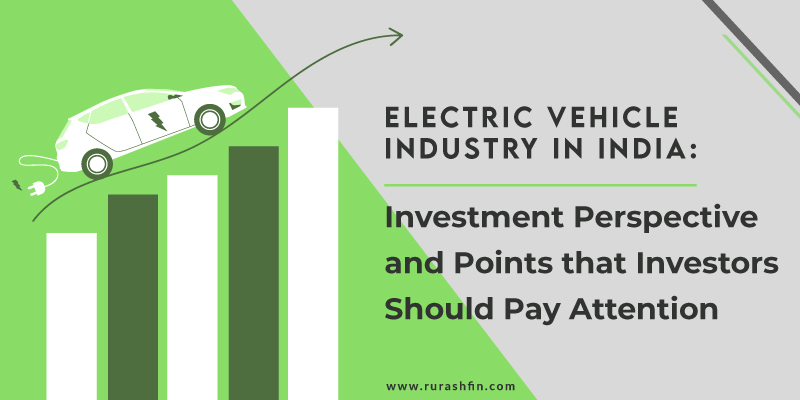Prospects for Investment and Considerations for Investors.
The electric vehicle industry in India has hit a purple patch. It has become the poster boy for investment in future technology owing to 100% FDI, a new manufacturing hub and an increased interest in improving the charging infrastructure. Federal subsidies and policies that make it easier to get discounts on electric two-wheelers made in India have helped the electric vehicle business grow.
In September 2021, the Indian government also approved a production-linked incentive scheme for the automotive sector. This will make it easier to manufacture electric cars and hydrogen fuel cells. Vehicles with hydrogen cells are similar to electric cars, but unlike EVs, which require an external power source to recharge the battery, hydrogen-powered vehicles can generate electricity onboard with the help of the hydrogen fuel cell.
In the year 2021 alone, India witnessed sales of over 300,000 EV units.
Automotive industries across the globe are going through a paradigm shift. They are putting more effort into finding new ways to get energy instead of relying on oil and other natural resources.
For the Indian subcontinent, the expensive and burdensome oil imports, excessive pollution, and the commitment to combating global climate change have been the primary catalysts in the transition towards e-mobility.
Electric Vehicle Growth Targets in India
The Indian automotive industry ranks fifth globally and is on its way to becoming the third-largest by 2030. Catering to an economy vastly reliant on fuel-intensive mobility is not feasible. To address this, policymakers are developing a “shared, connected, and electric mobility” strategy with the goal of reaching complete electrification by 2030.
Independent studies and reports suggest that the electric vehicle market in India will be worth USD 206 billion by the next decade. The EV market is expected to grow at a CAGR of 36 percent till 2026. During the same period, the EV battery market is also expected to grow at a CAGR of 36 percent.
E-Amrit: A One-Stop Information Platform for Everything EV
At the COP26 Summit in Glasgow last year, India launched its electric vehicle information platform, e-AMRIT:(https://www.e-amrit.niti.gov.in/), which functions as a one-stop platform for all the information required on electric vehicles. It actively addresses major concerns around the adoption and purchase of electric vehicles, providing information such as but not limited to charging facilities around you or the nearest to you, EV financing options, information regarding potential investment opportunities, government policies and current subsidies for manufacturers, and more.
Current Electric Vehicle Eco-System in India and is it ripe for investment?
For the Indian Subcontinent, the EV ecosystem is in its nascent stage and is developing rapidly. To the world, India offers the largest untapped market globally, especially when it comes to the Electric Two Wheeler market. The government has allowed 100% FDI in this sector.
The Indian government has bumped up clean mobility in its list of priorities, and the recent amendments focus on faster adoption and manufacturing of hybrid and electric vehicles in India. The FAME II scheme focuses on making electric two-wheelers more affordable.
As per phase two of the FAME scheme, by November 2021, about 1,65,000 electric vehicles were supported. Further, under phase two, approvals have been given for 6,315 electric buses, 2877 EV charging stations, worth INR 5 billion spread across 68 cities in 25 states, and about 1500 charging stations, amounting to INR 1.08 billion, across nine expressways and 16 highways.
The additional production-linked schemes focus on creating a local domestic manufacturing ecosystem to support the target and goal of better adoption of electric vehicles and E-mobility. This can only be achieved by welcoming and incentivizing fresh investments into developing local supply chains for key technologies, auto components and more.
Leading battery producers such as Amara Raja Batteries have taken the cue from government policies and incentives to bring new investments into green technologies such as lithium-ion batteries.
In April 2022, European renewable energy company Eren Group acquired the world’s densest batteries ( at 54mWh), developed by Bengaluru-based battery startup Pravaig, for storage applications. Compared to sodium-ion or aluminum-air batteries, denser batteries prove to be more cost-effective.
Owing to this growing opportunity, India’s EV market has many prominent players, such as OLA Electric, Ather Energy, Mahindra Electrics, and more, rapidly growing their market presence and share. States such as Karnataka and Tamil Nadu are launching innovative and investor-friendly policies and building the necessary infrastructure.
Recently, Tesla, the American electric vehicle and clean energy company, entered the Indian market by incorporating its subsidiary, Tesla India Motors and Energy Pvt Ltd, in Bengaluru.
There have been numerous positive developments on the charging infrastructure front in the country across states like Andhra Pradesh, Uttar Pradesh, Bihar, and Telangana by setting up targets for developing public charging infrastructure to increase the adoption of electric vehicles in the country.
Considering the government’s optimistic 2030 target, the electric vehicle market has much ground to cover, and it surely is on an upward tick. The COVID-19 pandemic did slow the industry’s progress, but the market sentiment in some segments was retained positively. In FY2020, the electric two-wheeler vehicle sales were in the green by 21%, the EV buses witnessed a 50% increase, but the electric car sales were grim by 5%.
- From January 2022 to May 2022, India witnessed a total sale of about 3,17,830 EVs.
- Electric two-wheelers account for about 61% of total unit sales; electric three-wheelers account for about 33%, and electric four-wheelers account for about 4% of the total EV sales in India.
- 81% of EV sales were made in the top 10 states of India, with Uttar Pradesh accounting for about 17% of sales ( 52,930 units), Maharashtra accounting for 14% ( at 44,511 units), and Karnataka accounting for 11% ( at 34,900 units).
- 83% of the electric vehicles in Uttar Pradesh were three-wheelers ( 44,042), with the highest in Lucknow at 5,705 units, followed by Kanpur and Allahabad.
- Maharashtra, Karnataka and Tamil Nadu contribute to about 48% of all high-speed two-wheeler sold between Jan 2022 to May 2022, with more than 25,000 units each.
Conclusion
The growth scope of India’s EV market hinges on capital availability for original equipment manufacturers, battery manufacturers, and charge point operators, along with the development and improvement of infrastructure for the customers.
India’s 100% electrified ambition requires an approximate annual capacity of 158GWh by FY 2030, which opens a huge investment avenue. The government is quite aware of it and has rolled out incentives to boost the market demand and localize key component production.
Several Indian states have already passed policies to attract industry investments, making EV adoption a better value proposition for consumers.
RURASH is one of India’s most trusted investment management firms. It helps clients build wealth and leave a legacy by offering financial solutions.

